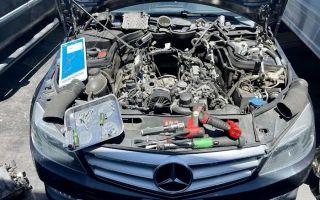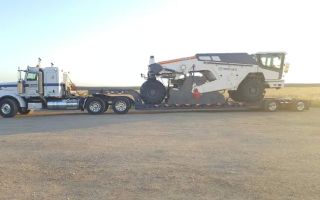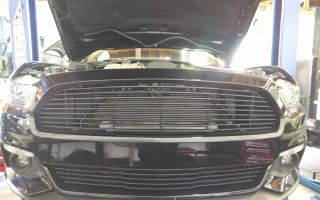Does Jumpstarting Work on Both Standard and Hybrid Vehicles?
- 1. Understanding Vehicle Jumpstarting
- 2. Jumpstarting Standard Vehicles: How It Works
- 3. Jumpstarting Hybrid Vehicles: Key Differences
- 4. Common Mistakes to Avoid While Jumpstarting
- 5. When to Call Professional Roadside Assistance
Jumpstarting a vehicle is a commonly known method to revive a car that has a dead battery. Whether it’s a cold winter morning or simply a case of leaving the lights on overnight, car batteries can lose their charge, preventing your vehicle from starting. While this issue is most commonly associated with standard gasoline-powered vehicles, many car owners wonder whether jumpstarting works in the same way for hybrid vehicles. In this article, we’ll explore how jumpstarting works for both standard and hybrid vehicles, the key differences, and what you should keep in mind when dealing with a dead battery. Whether you’re dealing with an unexpected battery failure or preparing for an emergency, understanding jumpstarting is crucial.
For standard vehicles, jumpstarting is a relatively simple and widely known process. The basic idea is to use the battery of another vehicle (or a jump starter) to supply power to the dead battery, giving it enough juice to start the engine. The process involves connecting jumper cables from the donor car’s battery to the battery of the car with the dead battery, ensuring that the positive and negative terminals are properly connected.
Here’s how it works step by step:
1. Prepare the vehicles: Ensure both vehicles are in park or neutral and that the donor vehicle is running. It's best to have both vehicles close enough so that the jumper cables can easily reach both batteries, but make sure they are not touching.
2. Connect the jumper cables: First, connect the positive (red) clamp to the positive terminal of the dead battery. Then, attach the other end of the positive cable to the positive terminal of the donor battery. Next, connect the negative (black) clamp to the negative terminal of the donor battery, and finally, attach the other end of the negative cable to an unpainted metal part of the car with the dead battery (such as a bolt or metal engine part). This acts as the ground.
3. Start the donor vehicle: Start the donor car and let it run for a few minutes to allow the battery to charge the dead battery. Then, try to start the car with the dead battery. If successful, leave the car running for a while to ensure it fully charges the battery.
When it comes to hybrid vehicles, jumpstarting is slightly different. While hybrid vehicles use both an electric motor and a gasoline engine, their batteries are set up differently than standard vehicles. Hybrids typically have a high-voltage battery system that powers the electric motor and a smaller 12-volt battery to run the vehicle's electronics (like lights, air conditioning, etc.). The 12-volt battery is the one that often needs jumpstarting when the car fails to start.
However, hybrid batteries have higher voltage than standard vehicle batteries, and special care needs to be taken when jumpstarting a hybrid. Here are a few key differences and things to keep in mind:
1. Check the owner’s manual: Always consult your hybrid’s owner manual before attempting a jumpstart. Some hybrids require specific instructions for jumpstarting due to their unique battery systems.
2. Use a proper jump starter: While you can still use jumper cables to jumpstart a hybrid vehicle, it's best to use a jump starter specifically designed for hybrid cars. Some hybrids are sensitive to the voltage of the donor battery, and using the wrong voltage could cause damage to the electrical system.
3. Know when to call for professional help: In certain cases, hybrid vehicles require special tools or professional services to jumpstart safely. If you’re unsure, it’s always best to contact a roadside assistance service to avoid any risks of damaging your vehicle’s electrical components.
Jumpstarting a vehicle seems straightforward, but many people make mistakes that can lead to damage or make the situation worse. Here are some common mistakes to avoid:
1. Incorrect cable connections: Always ensure the positive and negative cables are connected properly. Connecting the cables in the wrong order can result in sparks, electrical shorts, or even an explosion.
2. Attempting to jumpstart a damaged battery: If your car battery is cracked, leaking, or visibly damaged, jumpstarting it can be dangerous. In such cases, it’s better to replace the battery rather than attempt to revive it.
3. Not waiting long enough to charge the battery: After connecting the jumper cables, you should wait a few minutes to give the dead battery a chance to charge. Starting the vehicle too soon might result in it not starting, or worse, cause further damage to the electrical system.
While jumpstarting can solve many problems, there are times when calling a professional is the safest option. If your jumpstart attempt fails, or if you notice other electrical issues (like flickering lights, or the car not holding a charge), it’s best to contact a roadside assistance service. Towing services and auto rescue teams have the proper equipment and expertise to handle even the most complicated car problems safely.
When you’re in need of immediate help, roadside assistance providers like Rescue & Towing can offer quick response times and reliable services. Whether you're stranded due to a flat battery, flat tire, or any other emergency, their team is ready to help you get back on the road.
In conclusion, jumpstarting works on both standard and hybrid vehicles, but it’s essential to follow the correct steps and precautions. By understanding the differences between standard and hybrid vehicles, you can ensure the safety of your vehicle and avoid potential damage. If you ever find yourself in a situation where jumpstarting is necessary, and you’re unsure about the process, don’t hesitate to reach out to professional roadside assistance services like Rescue & Towing for fast and reliable support.


























